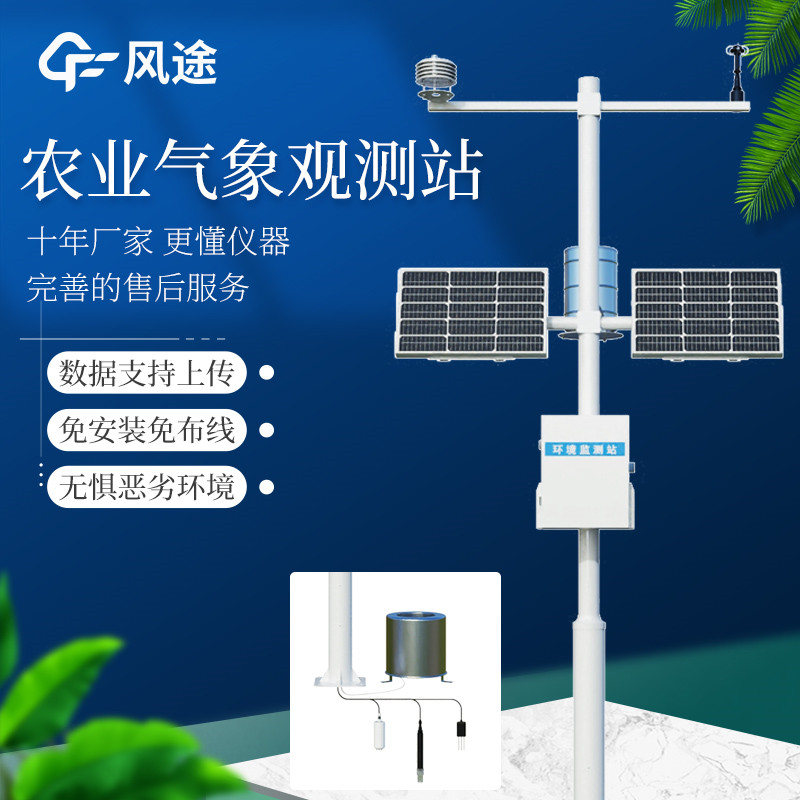In agricultural production, every step from sowing to harvesting is deeply affected by the weather. Temperature determines whether seeds can germinate smoothly. Precipitation influences the growth of crops and their irrigation needs. The duration and intensity of light are related to the photosynthesis and yield of crops. A sudden heavy rain may wash away farmland, and a long-term drought may lead to no harvest of crops. Appropriate meteorological conditions are the guarantee of a good harvest. The variability and uncontrollability of the weather have always been a major challenge for agricultural development.
Agricultural Weather Stations have emerged, which are agricultural meteorological monitoring devices integrating various technologies.
They can monitor various meteorological elements in the farmland environment in real time and continuously, such as air temperature, humidity, light intensity, wind speed, wind direction, precipitation, atmospheric pressure, etc. They can also monitor soil moisture, soil temperature, soil oxygen and other soil parameters, as well as pictures of seedling conditions, providing comprehensive and accurate meteorological data for agricultural production.
They automatically collect various meteorological data through sensors, and transmit the data to the cloud platform or agricultural management platform via wireless communication technologies such as GPRS, 4G, NB-IoT or wired connection methods. This makes it convenient for agricultural producers to view the data through terminals such as mobile phones and computers anytime and anywhere, enabling remote monitoring and management.
They are equipped with professional data processing systems to analyze, statistically process, and model the collected meteorological data, generating meteorological reports, trend analysis charts, etc. They can also combine historical data and crop growth models to predict climate trends and simulate and predict crop growth, providing a scientific basis for agricultural production decisions, such as formulating planting plans, fertilization plans, irrigation plans, etc.
Users can set personalized meteorological thresholds in the system according to the growth characteristics of crops and actual production needs. When the monitored data exceeds the preset range, such as too high temperature, low humidity, excessive rainfall, etc., the system will immediately send early warning information to farmers through methods such as text messages and APP push, so that farmers can take corresponding preventive measures in a timely manner, such as irrigation, drainage, wind prevention, frost prevention, etc., reducing the impact of meteorological disasters on crops.

Article address:https://www.sqqx.net/en/news/635.html

 +86 15898932201
+86 15898932201



